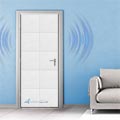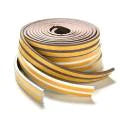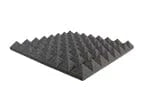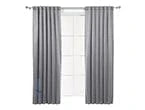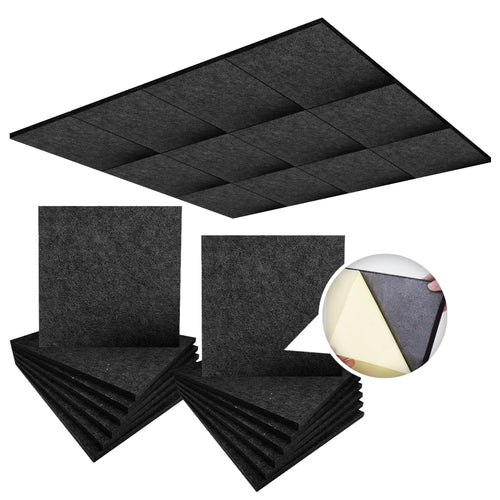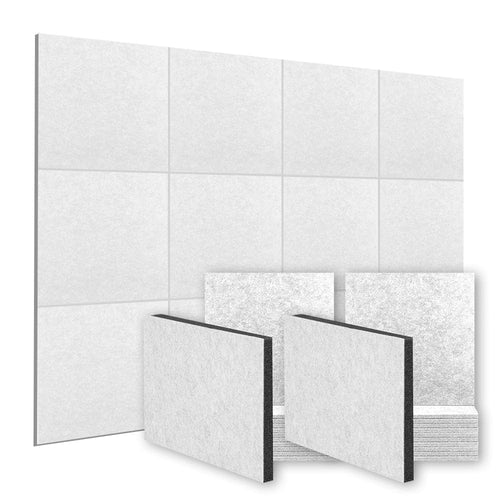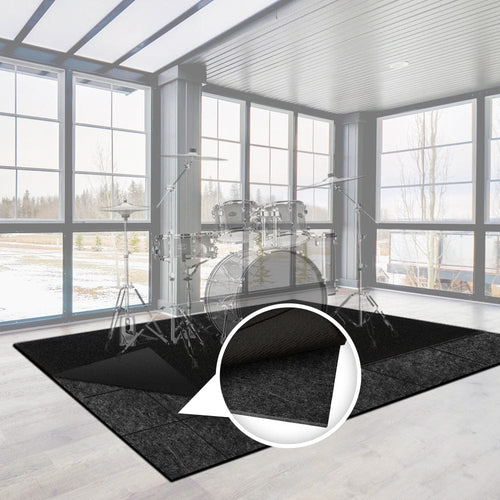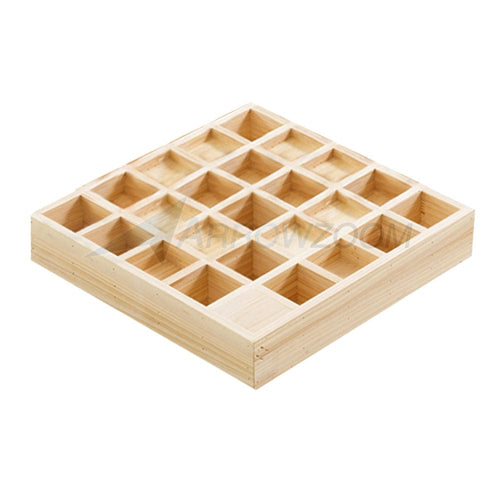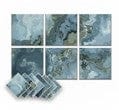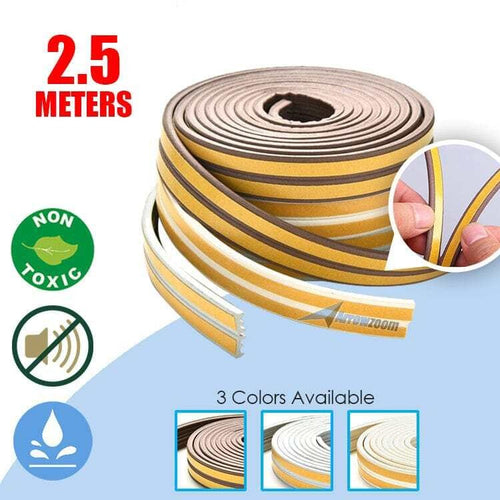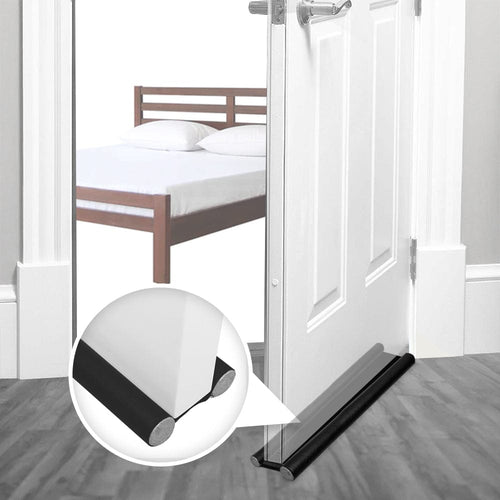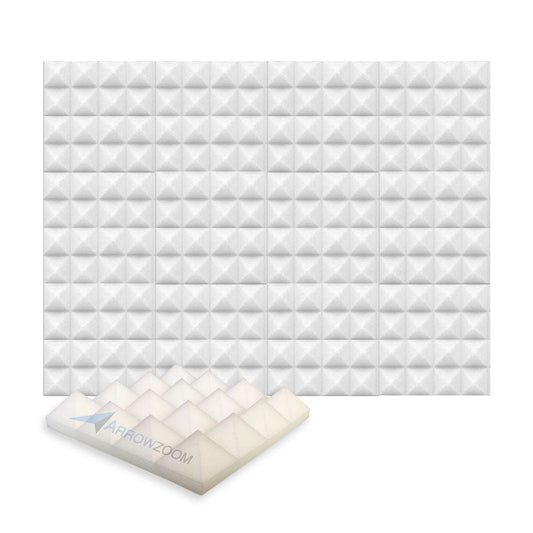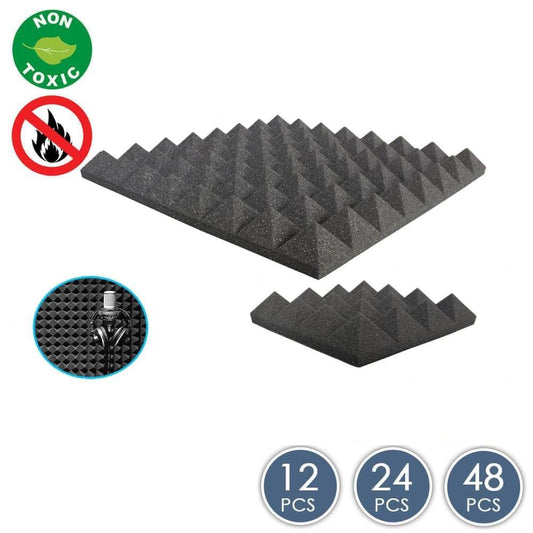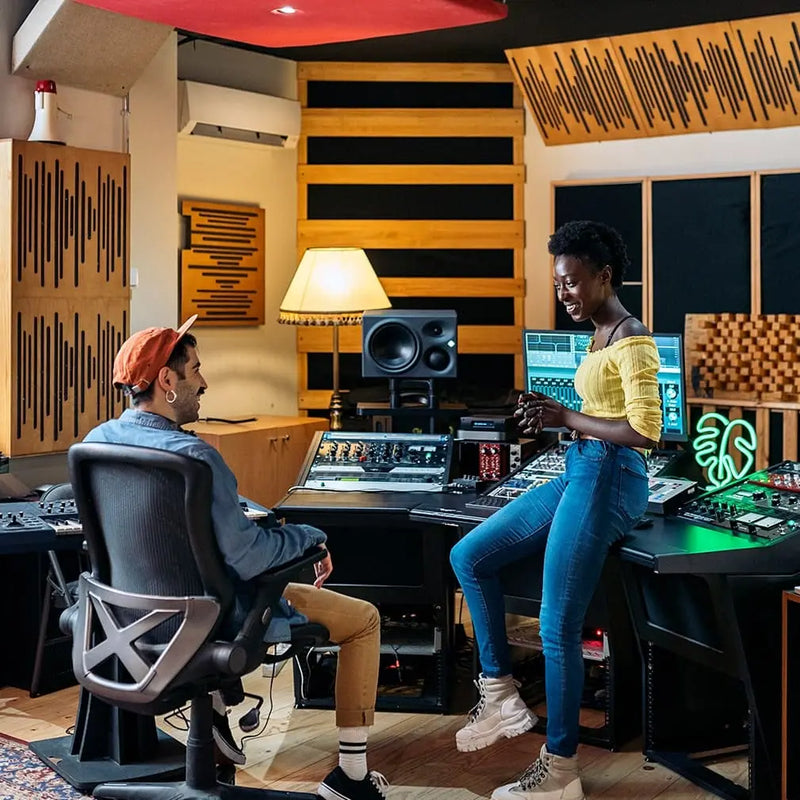Soundproof vs Sound Absorb

If you suffer from annoying neighbors or start a band in the house, you might want to consider soundproof your room. Many often find themselves having difficulty understanding the difference between soundproof and sound absorb.
This article is designed to help you clarify them.
Soundproofing is the process of blocking noise from entering a room.

Sound absorption is the process of absorbing sound waves within a room so they don’t create echo.
For example, when sound from a loudspeaker collides with the walls of a room part of the sound's energy is reflected, part is transmitted, and part is absorbed into the walls. Just as the sound energy was transmitted through the air as pressure differentials (or deformations), the sound energy travels through the material which makes up the wall in the same manner. Deformation causes mechanical losses via conversion of part of the sound energy into heat, resulting in sound attenuation, mostly due to the wall's viscosity. Similar attenuation mechanisms apply for the air and any other medium through which sound travels.
Sound Absorption
Controlling noise through sound absorption can be an extremely effective method of lessening the echo and noise within a space. Products that are designed to absorb sound are made with soft materials that can soak up the sound as it hits its surfaces. Our acoustic wall panels and stretched fabric systems All of these products are built specifically with absorption in mind. Whether it’s excessive noise in an office, poor speech intelligibility in a classroom or a disturbing echo in a village hall – a selection of cleverly placed sound absorbing materials on the walls and/or ceiling will help to resolve an array of noise issues. Whilst the term ‘sound absorption’ is less frequently heard, it’s probably the method we undertake the majority of the time – even if we are approached to provide a ‘soundproofing’ solution.
Soundproofing
Soundproofing or sound blocking with sound insulating material stops sound from entering or leaving a room. Soundproofing materials are mostly solid and heavy – the action of physically blocking sound requires it to be dense enough to reflect sound and keep it enclosed in one space. Soundproofing isn’t always the go-to solution when someone has a problem with noise, but there are definitely circumstances where soundproofing is the most suitable method. Theatres, cinemas and TV/Radio studios often need to use soundproofing to resolve issues of unwanted sound entering or leaving a room. We’ve worked on a number of projects where part of the solution has been to provide soundproofing methods. A project at Mintel’s studio in London required us to construct a metal stud framework covered with 2 layers of soundblock plasterboard to ensure sound did not escape the studio space. Where the brief is to stop disturbances travelling into or out of a room, soundproofing is the solution to go for.
Does Foam Absorb sound OR Soundproof sound?
Acoustic Foam is designed to reduce echoes for an improved sound quality within a specified location. It does not stop sound transferring through your wall from your neighbor or from leaving your room.
Does Installing Foam Add Value to a Home?
Working out whether something will add value to your property is an understandable thing to consider when making changes. After all, space, budget spending, timeline are all things to put into consideration. Sound Improvement is a one time investment that protects your home with more privacy. We recommend homeowner and commercial owners to install foams. It's easy, affordable and a quick fix to your solution.
We have helped over 1000 residential owners and commercial owners to solve their noise issue. Listen to what some of them says.
Acoustic Foams come in many different styles and colors. Here are some examples.
Soundproofing FAQs
Frequently Asked Questions
How do I soundproof my wall against noisy neighbours? 🤫
How do I soundproof my wall against noisy neighbours? 🤫
Soundproofing aims to prevent sound from entering or leaving a room, like blocking noise from those pesky neighbours. For more tips, check out our guide on soundproofing against noisy neighbours! 📖
How many Acoustic Panels Do I Need?
How many Acoustic Panels Do I Need?
The first step is going to be installing acoustic panels on your walls. These reduce the reverberations and echoes in the space.
Use our Free Tiles Calculator to find out
How do you install soundproofing? 🔧
How do you install soundproofing? 🔧
There are two main options for installing our DIY soundproofing solutions, and we're here to support you every step of the way!
DIY Installation:
All of our systems are DIY-friendly, saving you on installation costs.
80% of customers install the systems themselves because we’ve made it easy!
We provide simple, step-by-step installation guides and videos for a hassle-free experience.
Our technical team is ready to answer any questions and offer support. We're here for you! 🤗
Use a Local Contractor:
You're on your way to a noise-free home! If DIY isn’t an option, consider hiring a local tradesperson.
We simplify the process by communicating directly with your tradesperson throughout the installation.
Visit our installation page for more details! 📞
What's the difference between impact and airborne noise? 🔊
What's the difference between impact and airborne noise? 🔊
1. Airborne Noise
- This travels through the air, like conversations, TV sounds, or barking dogs. When sound waves hit a building, they cause it to vibrate, transmitting through the structure.
2. Impact Noise
- This results from physical impacts on buildings, such as footsteps, slamming doors, or moving furniture. Impact noise can be harder to isolate, as these vibrations are stronger and travel further through dense materials.
What are decibels? 📏
What are decibels? 📏
Decibels are measured logarithmically (not as a percentage) . This means that every increase of 10dB on the scale is a tenfold increase in sound pressure level (SPL) . Near silence is 0dB 🤫, while a sound at 10dB is ten times louder!
- 30-40 dB = Soft music, whisper 🎶
- 60-80 dB = Office noise, traffic 🚗
- 85-100 dB (HARMFUL) = Subway, shouted convo, chainsaw ⚠️
- 100-140 dB (DANGEROUS) = Chainsaw, loud concert, racing, shooting range 🚨
Is everything in stock and ready to ship? 📦
Is everything in stock and ready to ship? 📦
In stock, ships in 1-2 business days! Learn More
Where Is My Order?
Where Is My Order?
Track your order: Check your email or visit our Tracking Page.
FREE & FAST GLOBAL SHIPPING 🚚
30 DAYS RETURNS ✅
24/7 Live Support 📞
FREE & FAST GLOBAL SHIPPING 🚚
30 DAYS RETURNS ✅
24/7 Live Support 📞
FREE & FAST GLOBAL SHIPPING 🚚
30 DAYS RETURNS ✅
24/7 Live Support 📞
FREE & FAST GLOBAL SHIPPING 🚚
30 DAYS RETURNS ✅
24/7 Live Support 📞
FREE & FAST GLOBAL SHIPPING 🚚
30 DAYS RETURNS ✅
24/7 Live Support 📞
FREE & FAST GLOBAL SHIPPING 🚚
30 DAYS RETURNS ✅
24/7 Live Support 📞
FREE & FAST GLOBAL SHIPPING 🚚
30 DAYS RETURNS ✅
24/7 Live Support 📞
FREE & FAST GLOBAL SHIPPING 🚚
30 DAYS RETURNS ✅
24/7 Live Support 📞
FREE & FAST GLOBAL SHIPPING 🚚
30 DAYS RETURNS ✅
24/7 Live Support 📞
FREE & FAST GLOBAL SHIPPING 🚚
30 DAYS RETURNS ✅
24/7 Live Support 📞
FREE & FAST GLOBAL SHIPPING 🚚
30 DAYS RETURNS ✅
24/7 Live Support 📞
FREE & FAST GLOBAL SHIPPING 🚚
30 DAYS RETURNS ✅
24/7 Live Support 📞



